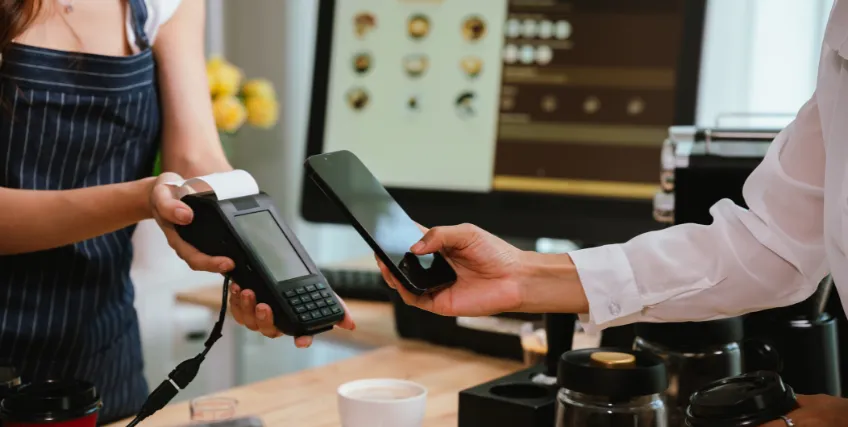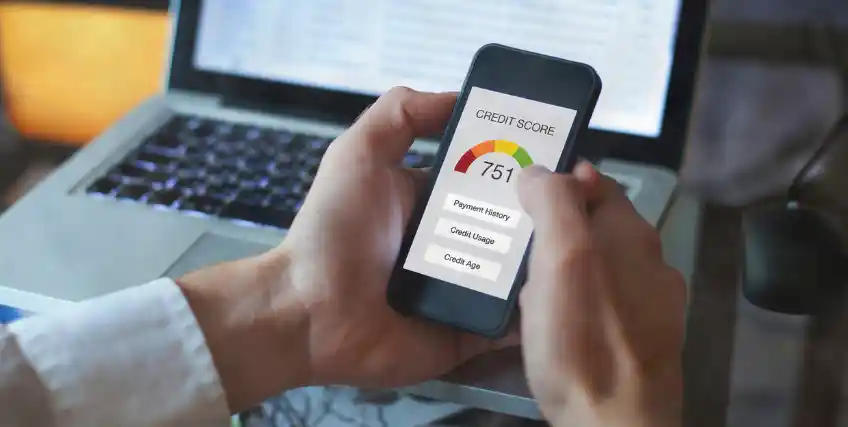How to Use Unsecured Lines of Credit Without Falling into Debt
May 15, 2025 | Last Updated on: May 15, 2025

In today’s unpredictable economy, small business owners and freelancers need flexible ways to manage cash flow. When traditional loans are not a quick option, an unsecured line of credit can offer access to easy funds without the need for collateral. However, without a solid plan, it’s easy to fall into debt.
Understanding how an unsecured line of credit works is essential before using it. This unsecured business credit product offers revolving access to funds, giving you flexibility, but also an additional responsibility. Whether you’re managing unexpected expenses, covering slow sales periods, or planning for home improvements, knowing how to balance borrowing is equally important, Also, repayment is the key to staying financially healthy.
In this article, we’ll see how to use an unsecured line of credit responsibly. You’ll also learn smart borrowing habits, how to align credit use with income, and ways to avoid debt. No matter if you’re seeking a personal line of credit or an unsecured business line of credit, it’s important to understand how this credit product works.
What is an Unsecured Line of Credit?
An unsecured line of credit is a type of loan that allows you to borrow up to a certain credit limit without offering collateral. Here the lender evaluates your credit score, credit history, and overall creditworthiness to determine eligibility.
When seeking an unsecured business line of credit for real estate investors, you don’t need to pledge assets such as real estate or vehicles. This makes it more accessible for business owners who don’t want to risk property. Some of the common types of unsecured lines of credit include personal loans, credit cards, business lines of credit, and even an unsecured line of credit for LLC owners.
This line of credit works as revolving credit, which means you can borrow, repay, and borrow again within the draw period. Some lenders may tie the interest to the prime rate, meaning you may have a variable interest rate rather than a fixed one. However, understanding these terms upfront is essential to avoid surprises.
Benefits of Using Unsecured Lines of Credit
An unsecured line of credit offers multiple advantages for small business owners and freelancers looking for flexible financing. Here are some advantages of using it.
Easy Access to Funds
You can get easy access to funds anytime within your available credit without going through a new application process. This makes it useful for covering unexpected expenses or filling temporary cash flow gaps in a business.
No Collateral Required
You don’t need to pledge assets for an unsecured line of credit. This won’t result in losing property if you miss any payments. However, this can negatively impact your credit score and financial standing.
Interest on What You Borrow
With an unsecured line of credit, you pay interest only on the amount used, not the entire credit limit. This makes it more affordable than taking a full lump sum term loan when you need smaller amounts.
Possible Fee Waivers
Many lenders waive the annual fee if you meet certain eligibility requirements. This reduces the cost of maintaining credit products over time.
Risks of Misusing Unsecured Lines of Credit
While unsecured lines of credit offer flexibility, they also come with risks if not managed carefully. Here are some potential risks that you need to be aware of.
Higher Interest Rates
Unsecured credit often comes with higher interest rates than secured lines of credit. This increases borrowing costs, especially if you carry a balance month to month.
Increased Debt
Using a personal line of credit or unsecured business credit for non-essential expenses may raise the risk of falling behind on monthly payments. This will result in building unnecessary debt.
Longer Repayment Terms
Making minimum monthly payments stretches your repayment timeline. This causes interest to compound, keeping you in debt longer.
Negative Impact on Credit Score
If you borrow too close to your credit limit, it raises your credit utilization ratio. This can lower your FICO score and hurt your ability to qualify for future loans.
Smart Ways to Use Unsecured Lines of Credit Without Falling into Debt
Small business owners using an unsecured line of credit need to have strategic planning. Here are some practical strategies that can help you borrow responsibly and avoid falling into debt.
Set a Clear Borrowing Purpose
Use the credit line for business needs, such as covering home improvements or bridging seasonal revenue gaps. It is better to avoid using it for luxury items or ongoing losses that won’t generate returns.
Track your Spending
Utilize online banking or mobile banking tools from your FDIC insured lender to monitor transactions. Also, keeping detailed records prevents overspending and helps identify areas where you can cut back.
Focus on Short-Term Expenses
Use your credit line for short-term expenses rather than long-term investments. You can use it to pay vendors while waiting for customer payments instead of funding large purchases.
Pay More Than the Minimum
Try to aim to pay more than the minimum monthly payments to reduce your principal faster. If you pay the balance in full each month, you will be able to avoid interest charges entirely.
Set Up Automatic Payments
Schedule automatic payments from your checking account or bank account to avoid late fees. On-time payments protect your credit history and maintain a positive relationship with your lender.
Monitor your Credit Utilization
Additionally, keep your credit utilization ratio below 30% of your available credit. This will help in maintaining a healthy credit score and show lenders that you’re managing your credit responsibly.
Tips for Business Owners Using Unsecured Lines of Credit
Business owners can find an unsecured line of credit as a flexible financing option that supports daily operations. However, it’s important to use it wisely to avoid unnecessary debt for smarter borrowing. Below are some tips for using unsecured lines of credit responsibly.
- It’s better to keep personal and business accounts separate. Use business lines of credit only for business-related costs. This helps in simplifying accounting and limiting personal liability.
- Plan your repayments around revenue cycles. You can schedule it to align with periods of higher income. This reduces the risk of carrying debt into slower sales seasons and helps you pay balances during strong months.
- An unsecured line of credit can also work as overdraft protection for your business checking account. This helps you avoid bounced checks and maintains a positive relationship with vendors and suppliers.
- Lastly, compare lenders for better terms. If you’re planning to expand, research the best unsecured business lines of credit to find competitive rates. Some lenders also offer lines of credit tailored to specific industries like unsecured business lines of credit for real estate investors.
Warning Signs You’re Headed Toward Debt Trouble
Certain habits signal rising debt risks. If you rely on an unsecured line of credit to cover everyday expenses, it’s a red flag. Maxing out your credit limit or using one credit line to pay another indicates poor cash flow management.
However, paying only the minimum monthly payments traps you in a cycle of interest payments without reducing the principal. When interest charges grow larger than your repayments, it’s time to reevaluate your borrowing strategy.
What to Do If You’re Struggling with Repayment
If you’re using an unsecured line of credit and falling behind, it’s better to contact your lender early. Many lenders can offer adjusted payment plans, temporary hardship relief, or interest rate adjustment.
Also, explore balance transfer options or consolidating debts into a term loan with a lower interest rate. This can simplify payments and may reduce your overall interest if you qualify for better terms.
If you’re overwhelmed, consider meeting with a financial counselor. They can help create a budget, review your credit offers, and set up a realistic repayment plan.
Conclusion
An unsecured line of credit can be a valuable financing option for business owners and freelancers. But it requires discipline and smart strategies to avoid long-term debt. By borrowing only what you can repay, aligning credit use with income, and making regular payments, you can enjoy the flexibility without falling into financial trouble.
Take time to review your current credit products and disclosures. Check offers from member FDIC banks and compare terms before applying.
Ready to strengthen your financial future? Start today by creating a repayment plan and using your unsecured credit wisely.
Frequently Asked Questions About Unsecured Lines of Credit
What is an unsecured line of credit and how does it work?
An unsecured line of credit is a revolving credit account that doesn’t require collateral. You can borrow up to a set credit limit, repay, and borrow again. It offers flexible access to funds for business or personal needs.
Is an unsecured line of credit the same as a credit card?
While both offer revolving credit, a credit card is a specific product used mainly for purchases. An unsecured line of credit offers broader uses, including cash withdrawals. It may have different interest rates and repayment terms.
How can I qualify for an unsecured line of credit?
Approval usually depends on your credit score, credit history, and income. Lenders assess your creditworthiness before setting a credit limit and interest rate. Strong credit increases your chances of getting approved with better terms.
What are the risks of using an unsecured line of credit?
Unsecured lines of credit often carry higher interest rates than secured loans. Overspending or making minimum payments can lead to long-term debt. Misuse can negatively impact your credit score and borrowing capacity.
Is an unsecured line of credit a good option for small businesses?
It can be a helpful tool for managing short-term expenses and working capital needs. Small businesses benefit from flexible access to funds without collateral. However, it should not replace long-term financing solutions.
Frequent searches leading to this page
Term Loans are made by Itria Ventures LLC or Cross River Bank, Member FDIC. This is not a deposit product. California residents: Itria Ventures LLC is licensed by the Department of Financial Protection and Innovation. Loans are made or arranged pursuant to California Financing Law License # 60DBO-35839




